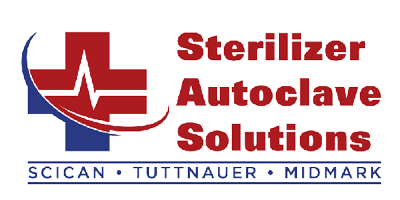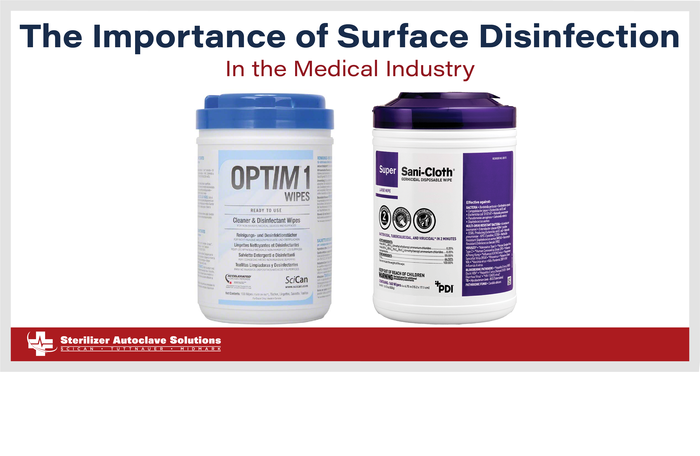The Importance of Surface Disinfection In The Medical Industry
When you go for a checkup at the doctor or a cleaning at the dentist, have you ever thought to yourself why you’re always sitting on plastic? How you’re never actually touching certain parts of the chair? Why the dental X-Ray machines have plastic bags on the handles even though everyone is wearing gloves? That is a form of infection control, and they’re there for your protection. You know that every instrument that is going to be probing your face for the next 2 hours is sterile, sure. But did you ever stop and think about everything else? The counters, handles on drawers, even the doorknob that you used to get in? Most likely the answer is probably not. It’s just right to assume that it is clean to some degree, but you never think about HOW important surface disinfection really is.
Surface disinfection protocols are put in place so that when you walk in healthy, you won’t walk out with any unsavory pathogens. Even now during the ever present stand against COVID-19. The CDC has guidelines to ensure that surface disinfection is an absolute must in every practice. What surfaces qualify as high risk, what kind of solutions to clean them, the whole 9 yards. Today we’d like to talk about what each type of disinfection is. And even provide some solutions of our own to help you combat the spread of disease. And if you just want to talk to someone for any questions you may have, call our Free Tech Support at 704-966-1650 Option 3.
Sterilizing the Instruments
The instruments used in any medical/dental setting aren’t counted under “routine surfaces” when you hear about surface disinfection. However these should be treated with just as much caution as surface disinfection. These are the tools you use directly in, on or around the patients. They need to be kept to a certain level of standard when it comes to disinfection or sterilization. Otherwise, patients coming in to get treated for one thing can walk out with 3 more unknown variables. And the CDC does state clearly the difference between sterilization and disinfection, saying here: “Disinfection destroys most pathogenic and other microorganisms by physical or chemical means. In contrast, sterilization destroys all microorganisms, including substantial numbers of resistant bacterial spores, by heat (steam autoclave, dry heat, and unsaturated chemical vapor) or liquid chemical sterilants. Disinfection does not ensure the degree of safety associated with sterilization processes.”
Dental practices usually have a couple ways of sterilizing their tools. They’re sent off to professionals off-site to be re-processed. And once they’re done they get sent back packaged instruments ready for their next use. Or they sterilize tools with in-house steam sterilization cabinets such as autoclaves, something we know a thing or two about. On our website, you’ll find autoclaves of all shapes and sizes. And you can even contact our free customer support to get help finding an autoclave thats tailored to your needs.
Surface Disinfection
This may sound like a given but surface disinfection is severely important in the workplace. Wipe down every surface that was touched, sat on, used, etc. But it’s HOW important surface disinfection really is in all of this. Especially now more than ever. Just like how we’re still seeing the effect of COVID, while debatably not rampant, still presents a hazard. You don’t want someone coming in for a dental cleaning and leaving with something they didn’t ask for or even know about, and spread it to others without realizing. Disregard for proper surface disinfection poses a threat to you and everyone around you. Which makes it severely important.
Even now the CDC continues to produce mandates and guidelines for surface disinfection. All to reduce the risk of contamination of anything between staff and patients in medical practices. Anything that can become contaminated by gloved hands, dental sprays, or contaminated dental instruments must be dealt with accordingly. The CDC has defined these types of surfaces and placed them categories. Those categories being “clinical contact surfaces” or “housekeeping surfaces.”
Clinical Contact Surfaces
Clinical contact surfaces are as the name implies, surfaces that come into contact with someone or something during the clinical procedure. Because of that, these surfaces are the most high-risk surface type of the two mentioned before. The CDC recommends that clinical contact surfaces that can be covered by a barrier must be, and the barrier be switched after each patient. The approved barriers are things like: clear plastic wrap, bags, sheets, tubing, and plastic-backed paper or other materials impervious to moisture. However there are surfaces of this type that can’t just be wrapped up in plastic. These kinds of surfaces include the following:
- Light handles
- Switches
- Dental radiograph equipment
- Drawer handles
- Faucets
- Dental chair-side computers
- Reusable containers of dental materials
- Countertops
- Pens
- Telephones
- Doorknobs
And for that, you’ll need an EPA-registered low-level or intermediate-level disinfectant. Low-level disinfection supplies have HIV and HBV label claims. And intermediate-level supplies have tuberculocidal claims.
Housekeeping Surfaces
Housekeeping surfaces are considered low-risk compared to clinical contact surfaces. They don’t require a high maintenance cleaning procedure. The CDC says they only need to be cleaned with detergent and water. OR if you believe the surface to be a bit more on the gross side, an EPA registered disinfectant. These surfaces mainly only include things like:
- Walls
- Floors
- Sinks
The Infection Control Program
Having an infection control program to follow is definitely a must-have in these times. But trying to figure out the ideal plan that can be executed within the timeframe between patients is hard. Especially when you consider all the factors that need to be planned accordingly. What kind of surfaces need to be cleaned, how long it takes to clean them, and even what product to use. There’s a broad market of disinfection supplies to choose from. From companies all over the world with differing claims in each product. Some of these claims can be proven through testing, but those without proper quality assurance may raise some red flags.
But how do you know which ones to look for? Well, there was a list put together by one Dr. William Rutala from his article “Disinfection and Sterilization.” The list has 8 core factors that Dr. Rutala feels are ideal when considering office disinfection supplies. Such as:
- Fast-acting (short contact time)
- Broad-spectrum
- Easy to use
- Non-toxic
- Acceptable odor
- Compatible with surfaces and equipment
- Stable shelf life
- Economical in cost
This list may seem like a lot to ask for when looking for something to get the job done. But we can assure you, it’s very simple. In fact, we’ve got some suggestions for a couple of disinfectant products that are all they say they are. For this case, we’ll be introducing you to the Optim1 Wipes and the Super Sani-Cloth wipes.
The Optim1 vs the Super Sani-Cloth
In this part of the article, we’ll tell you a little bit about both the Super Sani-Cloth and Optim1 wipes to give you an idea of what you’re getting.
Optim1
Starting off with the Optim1 wipes. Optim1 wipes are intermediate-level disinfection wipes. Able to tackle the toughest of unwelcome pathogens on any contact surface. These wipes boast a 30-second fungicidal contact time, and a broad spectrum 1-minute contact time. Not only is it fast, they’re listed as the one-step disinfectant cleaner that picks up active debris while you clean. And the active ingredient, Hydrogen Peroxide, leads to only needing half the wipes to keep your surfaces wet long enough for prime disinfection time. And did we mention they’re non-toxic?
Falling into the FDA’s LOWEST toxicity category, Category IV. No GHS hazard pictograms, signal words or statements required. And they’re eco-friendly to boot. Optim truly has the user in mind. It also has efficacy claims to a wide range of common disease catalysts. Including a 1-minute tuberculocidal and 30-second virucidal against COVID-19 and C. Auris (which we’ve previously gone over here).
If you think these are the wipes for you, we sell the Optim1 Wipes on our website available here for you.
Super Sani-Cloth
Of course, when it comes to decision making, you do need choices. So now let’s move on to the Super Sani-Cloth wipes. Super Sani-Cloth wipes are another tough contender against pathogens. Just like Optim1, these wipes are an intermediate-level disinfectant. So as per the wishes of Dr. Rutala, can deal massive blows as a tuberculocidal. These wipes have the active formulation of Isopropyl Alcohol and Quaternary Ammonium. They also contain other ingredients that make for a potent combination against pathogens.
But this also means it is potent against you if you’re not careful. Unlike Optim1, these wipes have to be handled a bit more carefully as the active ingredients are highly flammable and can cause eye irritation. But as long as you wear a bit of personal protection equipment, you’ll do just fine. Because these wipes have efficacy claims of being able to handle 32 microorganisms, even 6 multi-drug-resistant organisms (MDROs) and now COVID-19. And these are also a one-step cleaning wipe. Being able to get everything as you go, making a quick room turnover simple and efficient.
If you think these are the wipes for you, we sell the Super Sani-Cloth Wipes on our website available here for you.
Final Thoughts
If you didn’t already realize before, hopefully now you know just how important surface disinfection really is. Failure to properly keep a clean room patient after patient can potentially become a danger to the patient and maybe even you. Even in these times, with the looming effects of COVID not fully out of our way, this shouldn’t even be up for debate. Make a plan, a thorough one. Make sure that a proper room turnover can be completed after each patient to meet the disinfection standards. And be sure to check out the Optim 1 and Super Sani-Cloth wipes to take full advantage of what they have to offer.
As always if you have any questions about this process or anything else please feel free to contact us and take advantage of our “FREE TECH SUPPORT.”
We also offer FREE VIRTUAL TECH SUPPORT to “See and Talk” with a “Real Time Live Technician” for any problems you may be in need of help with.
You can also use our “FREE MAINTENANCE PROGRAM”. Take the guesswork and worrying about what unit is due for maintenance and which maintenance cycle it is time for. We will keep track of all your autoclaves and let you know when it’s time for anything.
The Optim1 line of wipes is available to check out here.
The Super Sani-Cloth line of wipes is available to check out here.


